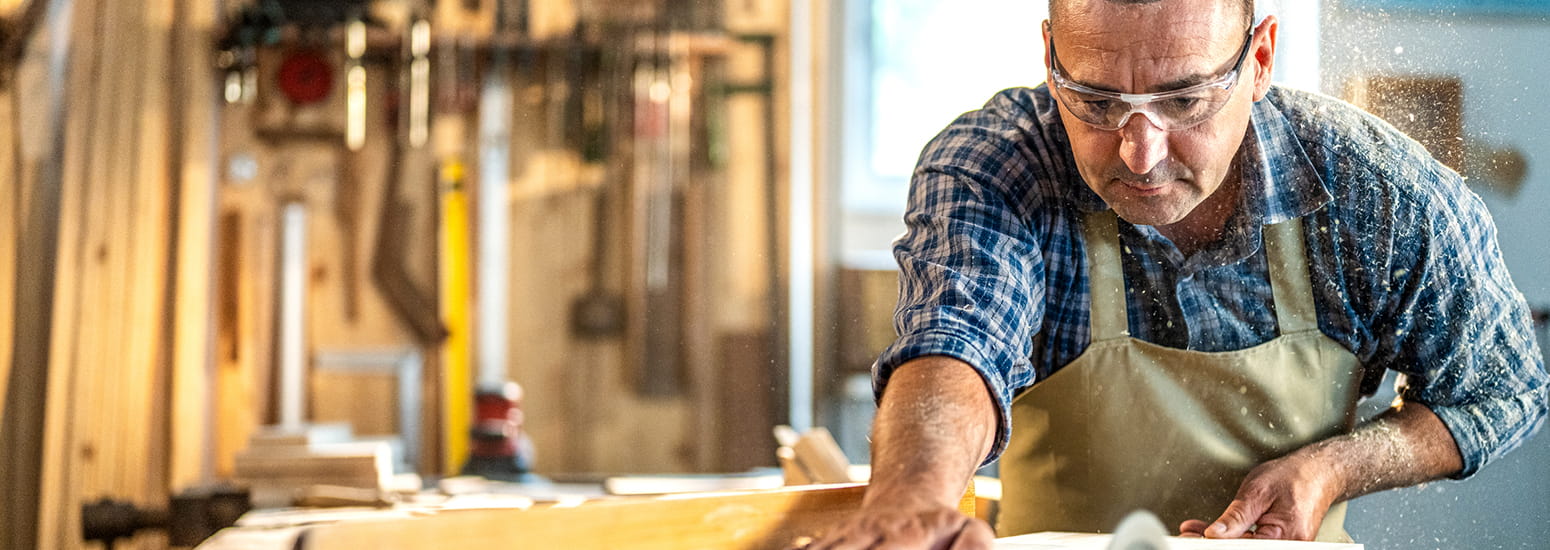What is a Hot Work Permit, and why do businesses need them?
- Hot works are a leading cause of fires in the workplace and can have significant consequences
- A Hot Work Permit process creates a safer work environment and helps minimise risks
- Download our Hot Work Permit template.
A fire in the workplace can have significant consequences for a business, with days if not weeks or months of disruption, not to mention a huge potential impact on its workforce’s health and safety.
A major cause of fires in the workplace is hot work, which can be anything from welding, drilling and cutting metal - to soldering and any other processes that have the potential to create heat, sparks, or flames.
The good news is that many workplace hot works incidents are preventable if the correct processes are in place.
What causes hot works incidents?
Heat, sparks or flames igniting and spreading beyond hot work boundaries can cause hot work incidents including fires, explosions and the spread of toxic chemicals, says Manchu Mahalingam, Senior Risk Officer at QBE.
According to a study from the United States National Fire Protection Authority (NFPA)1, which included a review of over 4,000 hot works fire incidents, welding torches and cutting torches were the leading causes of hot works fires in commercial settings and accounted for a combined 66% of incidents.
The study also showed commercial hot works fires aren’t contained to a single industry. Manufacturing and processing industries accounted for 25% of commercial hot works incidents, while retail, offices and storage properties made up a further 42%.
It also found 79% of fires happened during normal operations, proving incidents aren’t limited to construction activities either.
.png)
What is a Hot Work Permit?
A Hot Work Permit can significantly minimise the risks involved in hot works and help businesses manage the process as safely as possible, says Mahalingam.
“A Hot Work Permit is a permit to work system for businesses, which creates a safer working environment during any hot work and includes a checklist of steps to help businesses address the exposures and controls before and during and after hot work.”
The first step of the Hot Work Permit involves asking whether there are any safer ways of conducting the work – i.e. a method that doesn’t create heat, sparks or flames – or whether the work can be relocated to a dedicated hot work area.
“If you do have a safer spot, whether that’s out in the open away from combustibles on a concrete area, or in a dedicated hot works space with flash or welding screens, then it’s far better to move the works.
“However, some jobs, including welding and some plumbing, for example, need to be done on-site, potentially in the vicinity of combustible materials.”
In these cases, taking steps to minimise and control risks should form part of the process.
Who’s responsible for a Hot Work Permit?
The Hot Work Permit is issued by whoever the business has elected as their authorised permit issuer - someone who’s knowledgeable about the site; understands safe work practices; and can conduct an assessment to ensure the hot work can begin. Commonly this will be a building, site or production manager.
If you’re in a smaller office building and don’t have a dedicated building manager, then one of the tenants- depending on their knowledge of the site, safe work practices and risk assessment - may be best placed to issue the permit.
Either way, someone who knows what they’re doing needs to conduct that initial inspection prior to any hot works and complete the Permit as regularly as needed. Generally, this should be every eight hours or each shift. This minimises risk from staff changeover including potential unfamiliarity with ongoing works.
After the hot work is complete
Work completed and the job’s done? Unfortunately not. A critical part of the Hot Work Permit process is what happens after work is completed.
Fires can smolder away from the tiniest of sparks before igniting, so appointing a fire watch – who is a separate individual to the permit issuer or the person conducting the work – is the final step.
A fire watch is a trained individual who monitors the surrounding area continuously during the work and for 30 minutes after completion. For the hour that follows, the fire watch should provide periodic checks every 10-15 minutes to ensure there’s no fire activity.
The fire watch role is crucial. “As a minimum, they need to be trained in the use of fire protection equipment such as an extinguisher and hose reels,” Mahalingam says.
It’s a critical part of the process – but people are often tempted to forego it.
“Sometimes a hard-nosed contractor might tell the fire watch to relax their stance, however, it’s so important they carry that element out properly.
“The permit issuer needs to ensure the whole process happens as it should.”

The need for a Hot Work Permit
From a safety and property protection perspective – it’s imperative a Hot Work Permit is issued and followed for every single hot work job that’s carried out that is not within a dedicated hot works area.
“There are a significant number of fires each year that result from hot work,” says Mahalingam.
The NFPA study1 also confirmed how costly hot works fires can be in a commercial setting. Its analysis revealed direct property damage costs from hot works fires averaged $255 million* across an annual average of 2,630 commercial fires.
“These are serious incidents – with a huge impact on businesses - so it’s always better to take any possible steps to minimise risk using the permit system.
“The issues we often see arise due to people circumventing the permit, not completing the permit, or doing it piecemeal.”
Ultimately, insurance is there to protect you as a last resort for the unexpected. However, if a Hot Work Permit is followed to a tee, hot works fires, are far less likely.
More information
Download our Hot Work Permit template
You can also read more about hot works in the Australian Standard AS1674.1: Safety in Welding and Allied Processes or on the on the NSW Safe Work website.
Find out more about QBE Business Insurance










